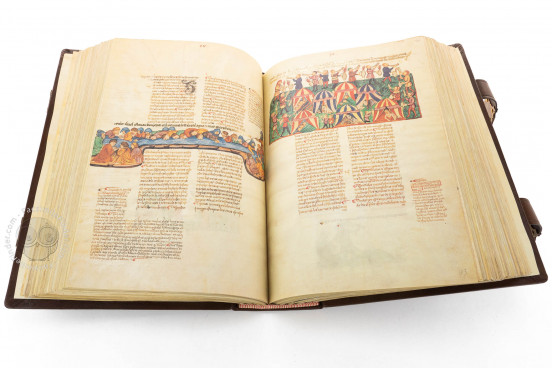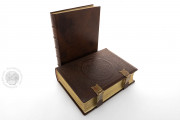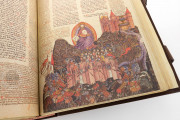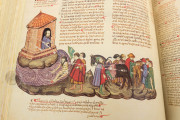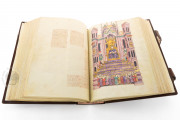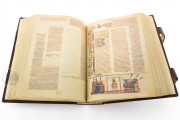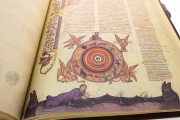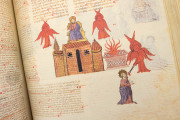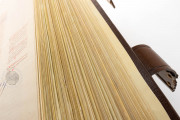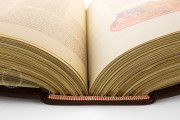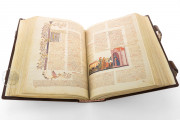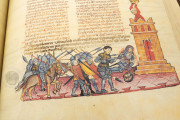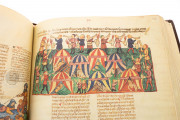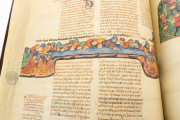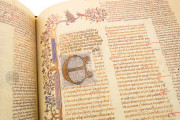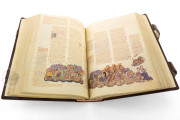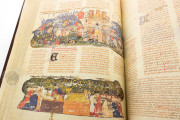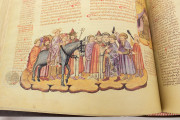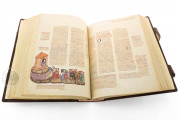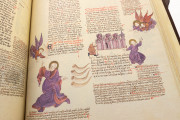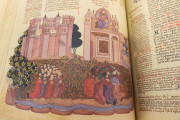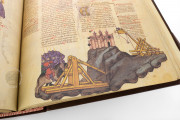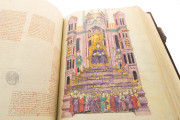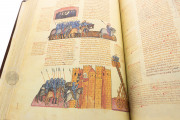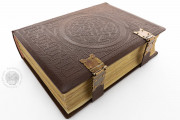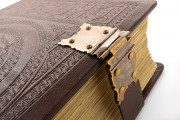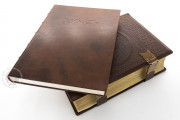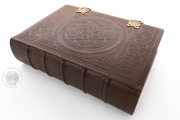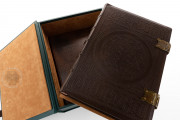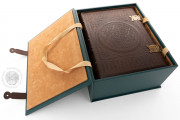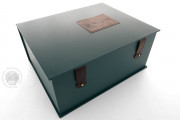The Alba Bible is a unique object and an essential witness to Jewish-Christian relations in early fifteenth-century Castile. It is an illuminated manuscript of a Spanish translation of the Tanakh—the Hebrew Bible—with an extensive commentary drawn from Jewish Rabbinic and mystical traditions and from the writings of early Christian biblical scholars. Produced in Maqueda, it is dated June 2, 1430, although its genesis is so complicated that it is impossible to say what exactly was completed at that time. It boasts 325 illustrations of the deeds and sayings of the ancient Israelites.
Luis de Guzmán, Grand Master of the Christian military order of Calatrava, commissioned the Bible. He engaged Moses Arragel, a rabbi renowned for his learning, to translate the biblical text and assemble the commentary. Both the translation and the exegesis were to be included in an illuminated book.
The Dream Team Pictured
Two friars, the Dominican Vasco de Guzmán and the Franciscan Arias de Ençinas, were engaged to guide the rabbi's work. Ençinas was principally responsible for assembling the Christian exegesis. They are pictured at the edges of the full-page presentation miniature (fol. 25v).
Luis de Guzmán is shown on an elaborate throne before a grand architectural complex and flanked by a pair of guards. Pictured between the friars on the steps leading to the throne are members of the Order of Calatrava performing the seven acts of mercy, from feeding the hungry to burying the dead.
Rabbi Arragel, wearing the distinctive red badge required of Jews in Castile at the time and flanked by members of the military order, is shown kneeling as he presents the Bible to Guzmán. The composition echoes the full-page image of the Throne of Solomon later in the book (fol. 236v).
Jewish Commentary Illustrated
The many artists who worked on the Bible were Christians from Toledo. Their paintings include many features that reflect Jewish commentary on the Tanakh, some of which are unprecedented in the history of biblical illustration, such as the depiction of Cain killing Abel by biting him, as described in the medieval Jewish mystical text Zohar (fol. 29v). Curiously, the Bible's commentary does not include this detail.
The illustrations also betray the influence of Christian Bible illumination, most conspicuously in the representation of the deity in human form with a crossed nimbus. The paintings in the first portion of the manuscript have captions in red or gold (fols. 26r-222r). Picture captions are rare after that.
An Unusual Process
It seems that the miniatures were first sketched, which determined their placement and required estimating the space needed for the biblical text. Then the biblical text and the picture captions were written. Next, the miniatures were completed, and only then was the commentary text written. There must have been a close collaboration between the rabbi and his Christian collaborators and among the many scribes and illuminators.
Many Scribes, Many Variations
The manuscript's scribes were Jewish, writing the Spanish text with the bodies of the letters hanging from the ruled lines. The letterforms vary, but the overall impression is consistent. The order of the biblical books diverges from the conventional order of the Tanakh, and the commentary for Esther was never written.
A Remarkable Treasure in a Private Collection
We do not know whether the Alba Bible ever reached the hands of the man who commissioned it, nor do we know that Arragel received his promised payment. The manuscript is first recorded in 1622, when the Inquisition confiscated it. Soon thereafter, it was presented to Gaspar de Guzmán (1587-1645), Count-Duke of Olivares. It entered the collection of the Dukes of Alba in the late eighteenth century and remains in the family's possession. The current binding dates from the 1920s. The Fundación Casa de Alba, created in 1973, is housed in the Palacio de Liria in Madrid.
We have 1 facsimile edition of the manuscript "Alba Bible": Alba Bible facsimile edition, published by Facsimile Editions Ltd., 1992
Request Info / Price
